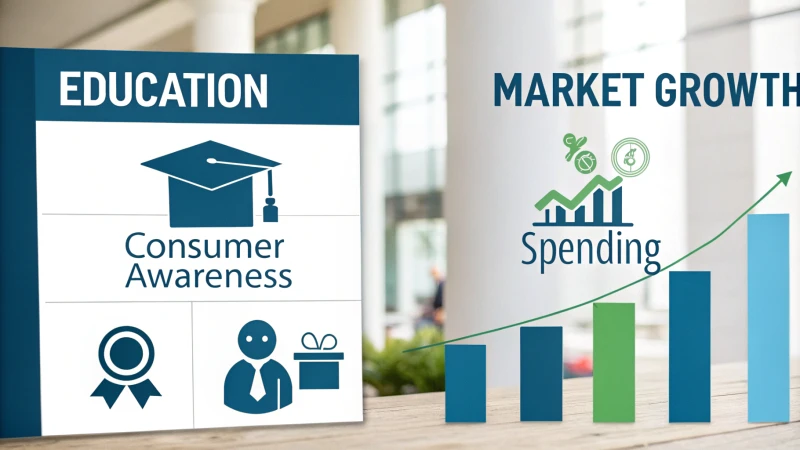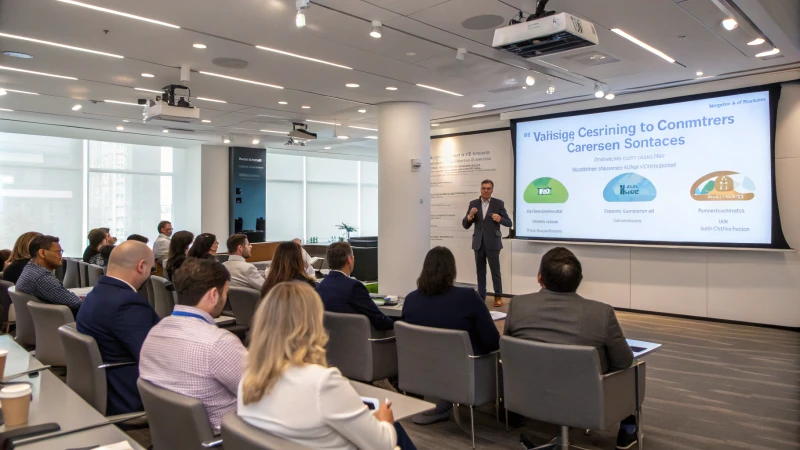
Ever wondered how a simple change in awareness can transform entire markets?
Educating consumers about the environmental benefits of eco-friendly products boosts their market acceptance. When people understand the impact of their choices, they're more likely to opt for sustainable options like disposable wooden cutlery over plastic.
I remember when I first realized the power of informed choices. It was during a community cleanup, where we found heaps of plastic waste lining our favorite park. That's when I truly understood that knowledge is a catalyst for change. This personal experience mirrors what happens on a larger scale when consumers are educated about eco-friendly alternatives.
By sharing stories and insights about the benefits of using sustainable products, companies can tap into a growing eco-conscious market. Education transforms awareness into action, leading to increased demand for products like disposable wooden cutlery. This shift not only changes consumer habits but also encourages industries to innovate and adapt, fostering a more sustainable future.
Consumer education increases sales of wooden cutlery.True
Educated consumers prefer sustainable products, boosting sales of eco-friendly options.
Plastic cutlery is more eco-friendly than wooden cutlery.False
Wooden cutlery is biodegradable and has a lower environmental impact.
Why Choose Disposable Wooden Cutlery?
Ever found yourself torn between convenience and sustainability when choosing cutlery? You're not alone. Let's explore why disposable wooden cutlery might be the perfect solution for you.
Disposable wooden cutlery offers the benefits of being biodegradable and made from renewable resources, reducing environmental impact. It delivers a natural, elegant dining experience without compromising on functionality or hygiene, making it an ideal alternative to plastic utensils.

Eco-Friendly Credentials
I've always been passionate about making eco-friendly choices, especially when it comes to the small things in life. I remember hosting a picnic last summer and feeling guilty about the pile of plastic utensils we'd inevitably toss out. That's when I discovered the beauty of wooden cutlery1. Unlike its plastic counterpart, it biodegrades naturally, meaning less guilt and a happier planet.
| Feature | Wooden Cutlery | Plastic Cutlery |
|---|---|---|
| Biodegradable | Yes | No |
| Made from Renewables | Yes | No |
| Aesthetic Appeal | High | Low |
Sustainability and Resource Management
The first time I came across wooden cutlery made from birchwood and bamboo, I was impressed by the thoughtfulness behind its production. These materials come from responsibly managed forests. For someone like me, who's keen on supporting sustainable practices, knowing that my choices contribute to better resource management is a big win.
Businesses focused on eco-friendly product sourcing2 can confidently incorporate wooden cutlery into their operations.
Enhancing Dining Experience
There's something undeniably charming about eating with wooden cutlery. During a recent dinner party, I swapped out our regular silverware for wooden forks and spoons. The rustic vibe they added was a hit among my guests, making the dining experience feel special and unique. Plus, it maintained the hygiene standards we all expect.
Consider the impact on consumer perception3 when switching to wooden options—many consumers appreciate businesses that prioritize sustainable choices. This can positively affect brand image and customer loyalty.
Practical Advantages
Despite being disposable, wooden cutlery is surprisingly robust. I've used them at both casual picnics and more formal events without any issues. They’re reliable for various food types, which makes them a versatile choice for different occasions.
Hygiene and Safety Considerations
One of my biggest concerns was safety and hygiene. However, learning that wooden cutlery often comes treated to resist moisture and lacks harmful chemicals put my mind at ease. Companies like WonBon ensure their products meet strict safety certifications, a crucial factor for health-conscious consumers4. This means I can serve meals without worrying about chemical leaching, ensuring everyone has a safe dining experience.
Wooden cutlery is biodegradable and eco-friendly.True
Wooden cutlery decomposes naturally, unlike plastic, reducing waste.
Plastic cutlery is more aesthetically appealing than wooden cutlery.False
Wooden cutlery offers a rustic aesthetic that enhances dining.
How Do Consumer Attitudes Influence Market Trends?
Have you ever wondered how your preferences can shape the market? It's fascinating how our everyday choices influence what businesses create and offer.
Consumer attitudes influence market trends by shaping demand, product development, and brand loyalty. By understanding these attitudes, businesses can tailor their strategies to meet evolving consumer expectations.

The Role of Consumer Education
I remember the first time I opted for an eco-friendly product—it was a revelation! As consumers, the more we learn about sustainability, the more our buying habits shift toward eco-conscious options. This trend is unmistakably clear across various sectors. Consider how knowledge of environmental impacts has led many of us to choose biodegradable cutlery5 over conventional options. It's happening everywhere, from cafes to retail giants.
Case Study: The Rise of Eco-Friendly Products
Take wooden cutlery's growing popularity. It's not just a trend—it's a movement sparked by our collective desire to make better choices for the planet. Companies like WonBon have tapped into this shift by offering sustainable alternatives. The leap in adoption rates underscores how our attitudes toward environmental responsibility are reshaping markets.
| Product Type | Market Share Increase (%) |
|---|---|
| Wooden Cutlery | 30 |
| Biodegradable Bags | 45 |
Influence on Brand Loyalty
Our values guide not just what we buy but who we buy from. Brands that resonate with our ideals—like sustainability—tend to earn our loyalty. This connection is vital for businesses looking to build lasting relationships with their customers.
Measurement of Consumer Attitudes
Understanding how we feel involves both numbers and narratives. I've seen firsthand how surveys, focus groups, and social media trends can reveal shifts in preferences, especially toward greener options. These insights are like a map guiding businesses through changing consumer landscapes.
Impact on Product Development
Our feedback matters more than ever. Companies now often adapt their products to align with what we expect—be it quality, sustainability, or innovation. This adaptability is key to staying competitive in our rapidly evolving world.
Examples of Market Adaptation
I've noticed several companies making clever moves to keep up with our changing attitudes. Picture a fast-food chain swapping out plastic for compostable alternatives6. It’s a win-win: boosting their brand image while meeting regulatory demands in eco-conscious regions.
Future Implications for Businesses
Recognizing how our attitudes affect market trends allows businesses to anticipate and meet future demands. As sustainability becomes a priority for more consumers, companies lagging in this area might find themselves left behind.
Eco-friendly products are gaining market share.True
Consumer preference for sustainability has increased demand for eco-friendly items.
Plastic cutlery market share is increasing.False
The trend shows a shift towards wooden and biodegradable alternatives.
How Can Case Studies Demonstrate Education's Impact on Market Growth?
Have you ever wondered how education can reshape market dynamics and drive growth?
Case studies demonstrate the impact of education on market growth by showcasing real-world scenarios where enhanced education transformed consumer behavior, leading to improved market outcomes.

Analyzing Consumer Behavior Changes
I remember when I first learned about eco-friendly products, it was like a lightbulb moment. Suddenly, I found myself choosing sustainable options over conventional ones. This shift wasn't just personal; case studies show it’s a widespread phenomenon. For example, an insightful case study7 in the wooden cutlery market revealed that consumer education about biodegradability led to a noticeable increase in sales. It’s fascinating how understanding the benefits can completely change buying habits.
Education's Role in Shaping Market Trends
When I think about how education influences preferences, I’m reminded of a report highlighting regions with strong environmental programs. These areas saw a spike in demand for eco-friendly goods. It resonates with another study8 that found educating consumers on the harms of plastics prompted a rise in sustainable product purchases. This educational influence isn't just theoretical—it's changing markets worldwide.
Real-World Examples and Insights
| Case Study | Market Impact | Key Findings |
|---|---|---|
| UK School Programs | 25% increase in eco-product sales | Awareness led to preference for sustainable goods |
| Australian Campaign | 30% boost in market share for eco-brands | Education shifted consumer loyalty |
These examples underscore the potential of well-executed educational initiatives to foster market growth by reshaping consumer preferences towards eco-friendly choices. For professionals like Michael, Sarah, and others, integrating educational elements into their strategies could be pivotal. By exploring more studies9, we can uncover further strategies to harness education for expanding markets and building brand loyalty.
By understanding these dynamics, procurement officers like Michael or purchasing managers like Sarah can make more informed decisions that align with both sustainability goals and consumer expectations.
Education increases eco-product sales by 25% in the UK.True
UK school programs increased eco-product sales by 25% due to awareness.
Consumer education decreases sustainable product demand.False
Studies show education increases, not decreases, demand for sustainable goods.
How Can Businesses Effectively Educate Consumers?
Ever found yourself fumbling through a product manual, wishing there was an easier way to get it? Let's dive into how businesses are making consumer education not just informative, but fun and engaging.
To educate consumers effectively, businesses can use interactive content, webinars, and personalized communication. Leveraging social media and influencer partnerships can also significantly enhance consumer understanding and engagement with products and services.

Interactive Content
I remember the first time I took a quiz on a brand's website. It was about finding my perfect skincare routine, and not only did it teach me about the products, but it also kept me entertained! Interactive content like this—quizzes, polls, or infographics—invites users to engage actively with information. It transforms learning about a brand’s offerings from a chore into an enjoyable experience by encouraging active engagement10.
Webinars and Workshops
Hosting webinars or workshops feels like inviting customers into the heart of your business. I once attended a virtual workshop where a company demonstrated the creation process of their eco-friendly products. It was eye-opening to see their commitment to sustainability firsthand. These sessions allow real-time interaction and give businesses the chance to address specific customer questions11 and concerns directly.
Personalized Communication
There’s something special about receiving a message that feels like it was crafted just for you. When businesses use personalized emails or messages to address individual needs, it makes the learning experience more intimate and relevant. I’ve noticed that targeted content not only keeps me engaged but also makes me feel valued as a customer, increasing the likelihood of consumer retention12.
Utilizing Social Media
Social media has become a playground for brands to educate and entertain. From behind-the-scenes peeks to live streams showing product usage, the possibilities are endless. I love how these platforms make learning feel organic and accessible. Regular engagement through comments and messages helps build a community where consumers feel part of the brand's journey.
Influencer Collaborations
I’ve always trusted recommendations from my favorite influencers. When they partner with brands, their authentic content can make a world of difference in understanding a product. Collaborating with influencers can amplify a brand’s educational reach, combining education with promotion to achieve awareness and understanding.
Visual Guides and Tutorials
Sometimes words aren’t enough to convey the full picture. That’s where visual guides or video tutorials shine. I find them particularly helpful when trying to grasp complex product features. This type of content is easily shareable, which broadens the educational efforts’ reach.
| Strategy | Benefit |
|---|---|
| Interactive Content | Engages users actively |
| Webinars | Real-time interaction |
| Personalized Communication | Relevant information |
| Social Media | Broad reach |
| Influencer Collaborations | Trustworthy promotion |
| Visual Guides | Simplifies complexity |
By weaving these strategies into consumer interactions, businesses can cultivate an informed audience that appreciates the nuances of their products. This ultimately leads to more confident purchasing decisions.
Interactive content boosts consumer engagement.True
Interactive content captivates consumers, enhancing understanding and engagement.
Webinars lack real-time interaction opportunities.False
Webinars provide real-time interaction, addressing specific questions.
Conclusion
Educating consumers on the eco-friendly benefits of wooden cutlery enhances market acceptance, driving demand for sustainable alternatives and fostering a shift towards environmentally responsible choices.
We’ve also created a quiz to challenge: Eco-Friendly Consumer Education
-
Learn about how biodegradable cutlery helps reduce landfill waste and supports sustainable practices. ↩
-
Discover responsible sourcing methods that contribute to forest sustainability and eco-friendly product lines. ↩
-
Explore how consumers perceive businesses using sustainable products and the impact on brand loyalty. ↩
-
Understand the importance of health certifications in ensuring safe consumption with disposable cutlery. ↩
-
This link provides insights into the increasing demand for biodegradable cutlery, highlighting the shift towards sustainable products. ↩
-
This link explores how fast-food chains are adopting compostable utensils to meet consumer demands and environmental regulations. ↩
-
This link provides a detailed case study on how educating consumers about wooden cutlery benefits drives market growth. ↩
-
Explore how regions with strong environmental education programs experience shifts in consumer demand. ↩
-
Learn more about using education as a strategy for expanding market reach and enhancing brand image. ↩
-
Explore how interactive content increases user engagement and product understanding. ↩
-
Discover why webinars are effective for real-time customer interaction and learning. ↩
-
Learn how personalized marketing enhances customer retention and satisfaction. ↩

